The Ivory Ball Python isn’t just a very popular morph – it’s an excellent addition to some high-end breeding projects. Keep reading to get some tips on why…
Ivory Ball Pythons are cream-colored snakes that have two copies of the Yellow Belly gene. This homozygous, or super, form of Yellow Belly gives them an almost leucistic appearance. As a standalone morph, Ivory is spectacular, but in breeding projects it will add brightness to all of its offspring.
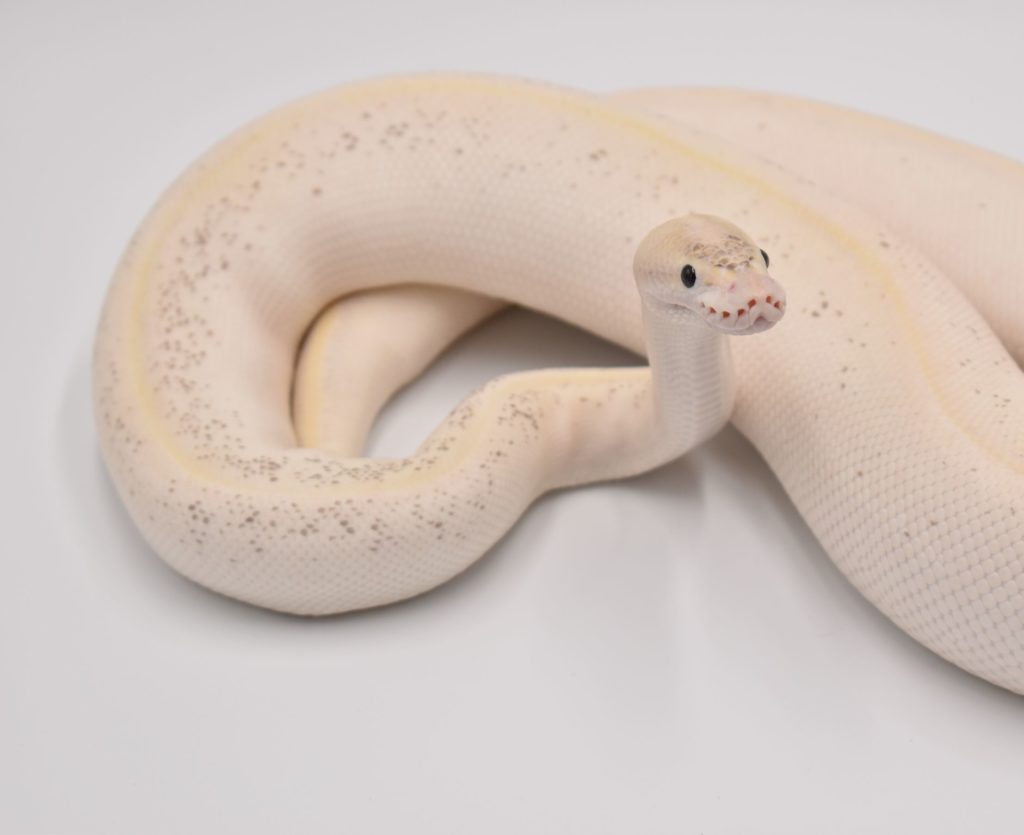
Description
As the names suggests, Ivory Ball Pythons aren’t white – they’re an off-cream color, that tends to darken a little with age. Often, this is the dominant color in adults, and you can’t really make out any pattern on them.
Hatchlings, on the other hand, have a subtle but very beautiful pattern overlaying their cream background. Obviously, this varies according to whether there are other genes in the combination (either known or unknown).
In general, adults have the following color/pattern features:
| Head: | Light gray, with lighter stripe along each side |
| Eyes: | Black |
| Dorsum (back): | Very faint yellow stripe |
| Belly: | Pure white or cream |
| Tail: | Darker yellow stripe (sometimes) |
Hatchlings are a little more interesting, and have the following appearance:
| Head: | Dark gray and tan, yellow stripe along each side |
| Eyes: | Black |
| Dorsum (back): | Thin yellow stripe that gets stronger towards the tail. Often, this stripe has patches of purple on either side of it |
| Belly: | Pure white or cream |
| Tail: | Strong yellow stripe. Mail be mostly purple or gray on either side of it |

Genetics – what makes an Ivory Ball Python?
An Ivory Ball Python is a super Yellow Belly, aka homozygous Yellow Belly. A Yellow Belly has one copy of the Yellow Belly gene, which is called heterozygous.
If you breed two Yellow Bellies together, you get a one in four shot at making one with two copies, which is called homozygous, and that is what an Ivory is. So, Yellow Belly x Yellow Belly = Ivory (in 25% of offspring).
Unlike some morphs, these snakes do not have genetic problems. Nor do they have any negative interactions with other genes that we know of.
Temperament
Once again, I’m going to demonstrate extreme bias here without a lot of fact to back it up! I personally think you can’t have too much Yellow Belly in your collection – and an Ivory or two is a great addition.
Ivory Ball Pythons have a great temperament. It could be luck, but my Ivory Ball Pythons (and even single gene Yellow Bellies) have been some of the most docile, laid-back snakes I’ve ever kept. They have also been great feeders and breeders.
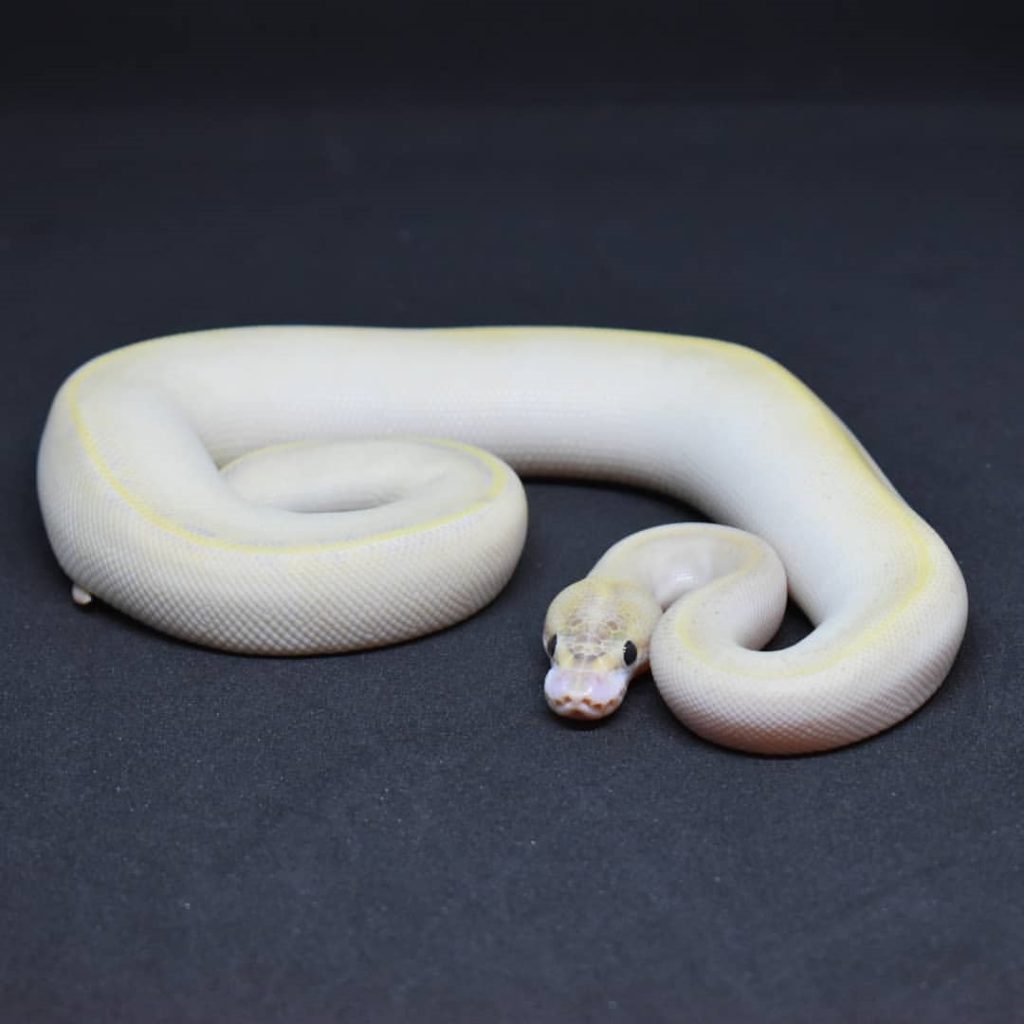
Size and care
Ivory Ball Pythons get to the same size as other morphs (asides from the Volta Ball Python) and have exactly the same care requirements. The only difference is that they tend to be great feeders, and you need to keep an eye on this.
Often, your Ivory will be that snake that always eats the leftover rats from your other, pickier pets. The problem with this is that they will quickly become obese if you don’t have a little discipline with them.
Once an Ivory is fully-grown, weight it every couple of months to make sure it isn’t getting too heavy. An adult snake’s weight should be stable, unless it’s breeding. Signs of obesity include what looks like jowls and folds of skin at the back of the jaw, and a dip over the spine.
Popular Ivory combination morphs
Now you might be thinking that this morph will “white-out” any combination, and maybe white snakes aren’t your thing – but hold that thought! I want to show you some Ivory combos’ that will drop your jaw…
1. Pastel Ivory Ball Python
Like I always say, Pastel (an incomplete dominant gene) improves the color and intensity of almost every single combination you put it into. Often, it adds a nice dose of yellow, and affects pattern, too.
In this combination, it does exactly that. Pastel Ivories have a slightly lighter dorsal stripe and less gray coloration on their heads. They also have faint yellow patches of color on their dorsum.
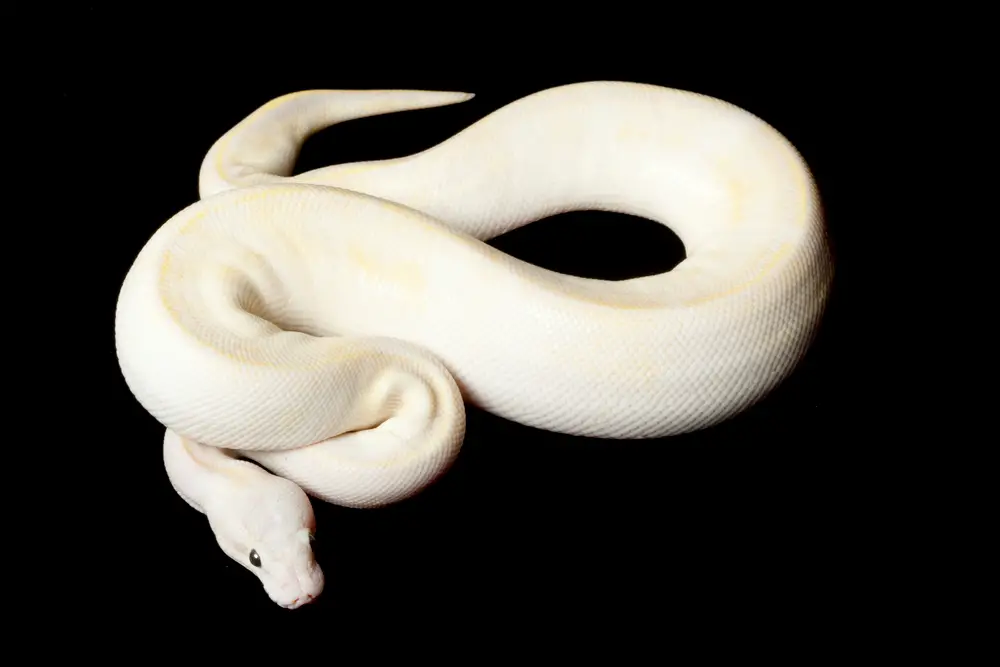
2. Fire Ivory Ball Python
Spirit, the Fire Ivory that you can see in the photo, is one of my favorite snakes. As a juvenile she looked just a like a normal Ivory, so I was genuinely curious to see what effect the incomplete dominant gene Fire would have, if any.
Luckily for me, at around 6-8 months of age, Spirit began to get grey freckles, much like the black flecks on Coral Glow Ball Pythons. The difference being that Spirits freckles are concentrated towards the anterior third of her body.
This isn’t drastically different from a regular Ivory, but the freckles just add a little something to her appearance that I think is really cool.
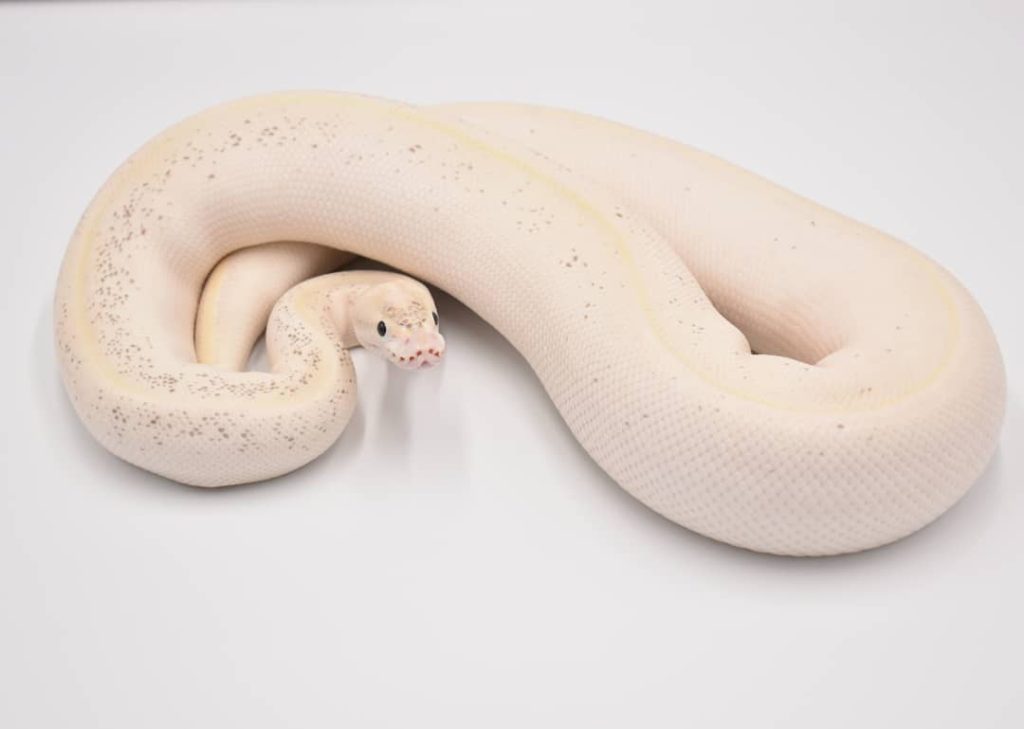
3. Leopard Ivory Ball Python
This combination involves Ivory, and the dominant gene Leopard, which has a strong effect on pattern. As you can see from the video below by Chris Hardwick (make sure you subscribe to his channel!) the Leopard Ivory has a lot more pattern than other Ivory morphs.
If you like an almost white snake – don’t go for this one. If, on the other hand, you like the bright, jumbled pattern of Leopard, then this could be the snake for you!
4. Ivory Clown Ball Python
This combination is Ivory, with the recessive gene Clown, which is still one of the most popular morphs available.
Obviously, I couldn’t really talk about high-end Clown combinations without including a video by Kinova Reptiles, the company created by Justin Kobylka.
I’ll let the snakes on show here talk for themselves – figuratively speaking, that is. Again, make sure you subscribe to Justin’s channel.
Ivory Ball Python for sale and price
The Yellow Belly gene is one of the cheapest Ball Python morphs available, both in North America and Europe. For this reason, you can find its super form, Ivory, and a reasonable price.
On average, you could expect to pay £150-300/€170-340 for an Ivory in Europe. In North America, you will be looking at $150-300.
As always, the best place to buy them is on Morphmarket.com. You can look for snakes by region, and see the ratings and feedback left for breeders.
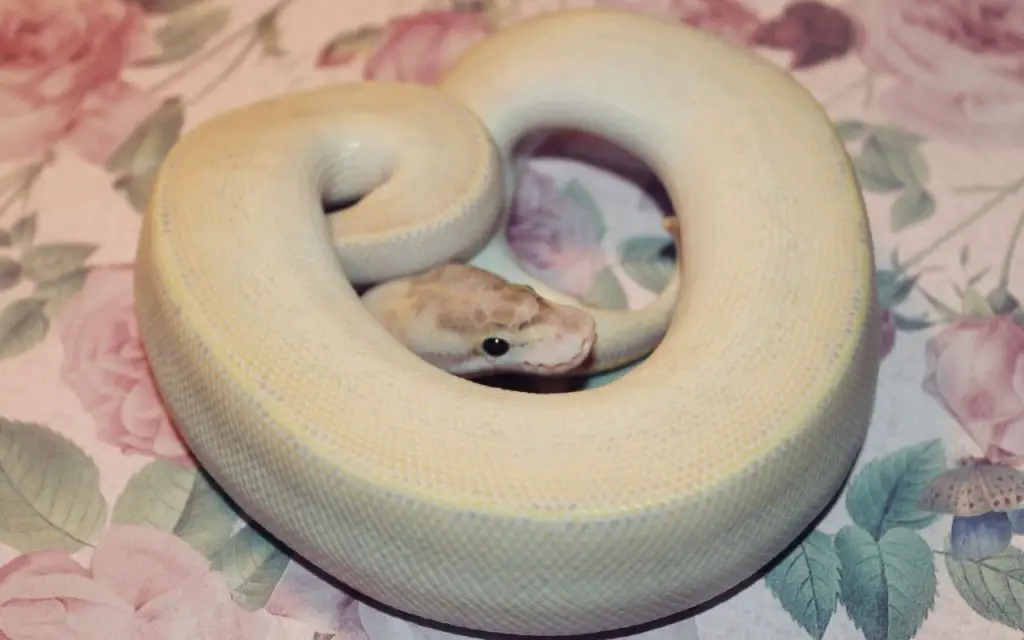
Breeding tips
I don’t have a lot of tips for breeding this morph, because it’s great as it is! However, there are a couple of things you can do to make something new or unusual with it.
First off, try adding it to Clown projects. Clown can create unusual results when combined with a lot of genes. Try breeding to two Clowns that both have Yellow Belly and a dark gene, and you could get something very unusual. If that dark gene is rare, you might even get a world first.
Second, you could use your Ivory for a Highway or Freeway project. Highway is a stunning morph that is simply Yellow Belly and Gravel. Freeway is similar but involving Asphalt and Yellow Belly instead.
You could breed an Ivory female to an Asphalt male, for example, and roughly 50% of the offspring would be Freeways. That would be an exciting and profitable breeding project…
Traits and care summary
| First produced by: | The Snake Keeper, 2003 |
| Morph type: | Super form of Yellow Belly (an incomplete dominant gene) |
| Genetic issues: | None |
| Goes well with: | Fire, Pastel, Clown, Enchi, Leopard, Gravel, Asphalt |
| Availability: | High |
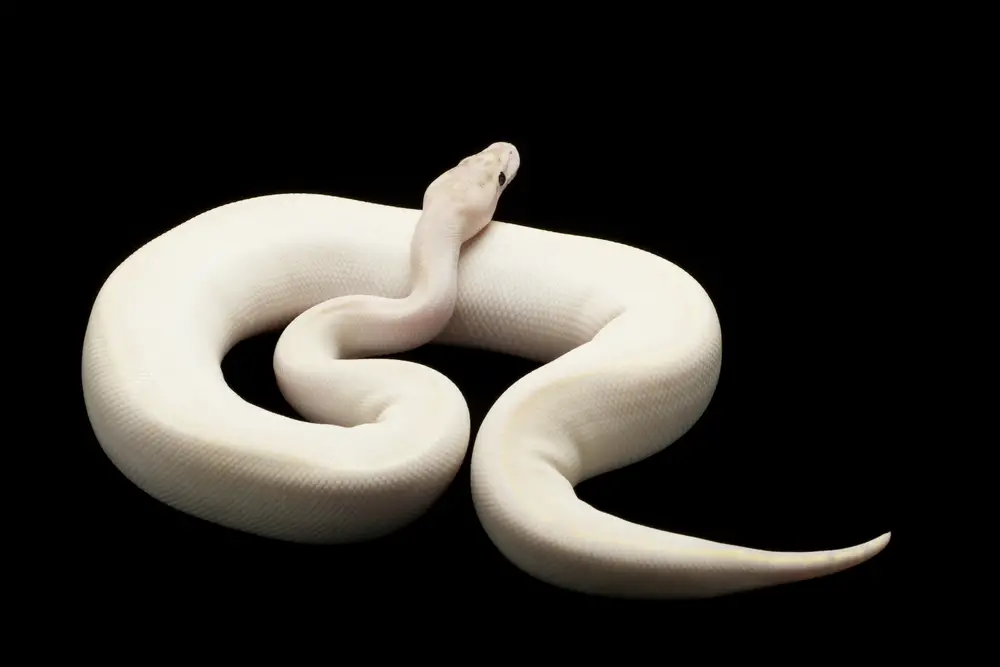
FAQ relating to Ivory Ball Pythons
What is an ivory ball python?
An Ivory Ball Python is one that has two copies of the Yellow Belly gene. The Yellow Belly gene is incomplete dominant in its heterozygous form. In its homozygous form (the Ivory), however, it achieves full dominance, and completely changes the snake’s pattern. It replaces almost all of the normal coloration with a light cream hue.
How big do Ivory ball pythons get?
Ivory Ball Pythons get to 3.5-4.5ft (106-137cm) for females and 3-3.5ft (90-106cm) for males, just like regular Ball Pythons. As far as we known, they don’t have have any known physical or genetic differences to other Ball Pythons asides from their color. All-in-all, they are just docile and easy to care for as their normal counterparts.
Do ivory ball pythons have blue eyes?
Ivory Ball Pythons do not have blue eyes. They have black eyes, and this is one of the key identifiers for the morph. Ball Pythons with blue eyes are called Blue Eyed Leucistic, or BEL.
What is the difference between Ivory and leucistic ball python?
Ivory Ball Pythons are super Yellow Bellies, whereas Leucistic Ball Pythons have two copies of any of the following genes: Phantom, Butter, Lesser, Russo, Mojave, Special, Mystic. The most noticeable difference overall is that Ivory Ball Pythons have black eyes, whereas Leucistic Ball Pythons have blue or gray eyes.
Also on this topic:
- Acid Ball Python: A Complete Morph guide and breeding tips
- Coral Glow Ball Python
- Pastel Ball Python
- Champagne Ball Python Morph Guide and Breeding Tips
- Mojave Ball Python: A complete morph guide and breeding tips
